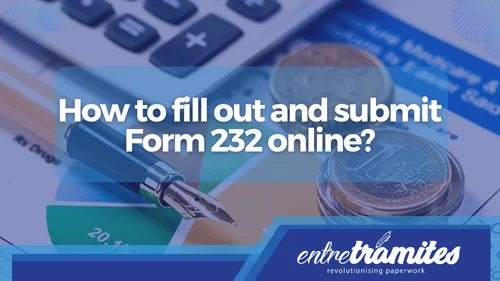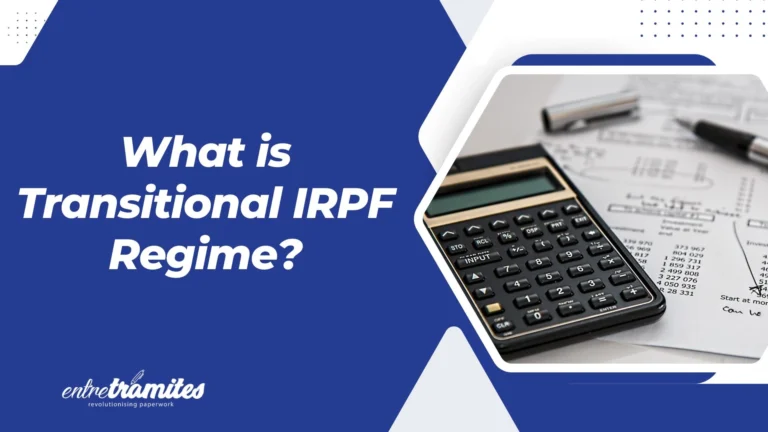What is Form 232?
Form 232 of the Tax Agency is related to the informative declaration of linked operations and operations and situations related to countries or territories classified as tax havens.
They are obliged to present the AEAT Form 232:
- Taxpayers of the Corporate Income Tax.
- Non-resident income tax taxpayers who act through a permanent establishment.
- Entities under income allocation regime.
What are linked operations?
Linked operations are considered to be those carried out between natural or legal persons with certain commercial or family ties. We speak of this type of operation when it occurs between entities of the same business group, or between a company and its partners, or when several companies share the same administrator or with their direct family members (up to the second degree).
In order to avoid fraud resulting from lowering the costs of activities, the linked operations must adjust to normal market prices. Values (arrived with different legally established methods) that have to be the same as those that would be applied with other independent persons or entities, without any link, under conditions of free competition.
Who is obliged to file Form 232?
Form 232 is an informative declaration of operations with related persons or entities, taxpayers of Corporate Tax and non-resident income tax that act through a permanent establishment. Also, entities under the income attribution regime constituted in a foreign country but with a presence in Spanish territory. All these subjects are obliged if:
- The set of operations carried out in the tax period, of the same type and under the same valuation method, exceed 50% of the entity’s turnover.
- The set of operations carried out in the tax period exceeds 100,000 euros in specific operations, of the same type and valuation method.
- Those who carry out operations during the tax period with the same person or related entity for a value greater than 250,000 euros are also required to file Form 232, as long as they are not specific operations.
And what are considered specific operations?
- Operations are carried out between a company and a natural person who pays taxes in modules when this person or their relatives have a shareholding equal to or greater than 25% in the company.
- Operations carried out with people or entities residing in tax havens, with exceptions.
- Transfers of business or shares or corporate interests of a company that is not listed on the stock market.
- Transfer of real estate and operations on intangible assets (for example, the transfer of the right to use a patent).
How is Model 232 submitted?
The filing of the declaration must be carried out online, either through the electronic headquarters of the State Agency of Tax Administration or from the Tax Agency’s website.
How to fill out Form 232?
The first thing you will find in the document to fill in is the Identification part. Of course, you will have to enter your NIF, surname and first name or company name. Then you will find the Devengo (Accrual). This is filled out automatically when you register the Start Date of the tax period. You will have to indicate, the CNAE Code of your main activity and you must mark, in this case, the “X” in the Complementary Declaration or the Substitute Declaration. In the first case, if you have to include data omitted in a previous declaration, in the second, when the purpose of the presentation is to cancel or replace a previous Form 232. In both cases, you must indicate the number of previous modified or cancelled declarations.
Block I. Information on operations with related persons or entities
You must complete one by one all the operations per person or related entity that group a certain type of operation with the same valuation method, all in the same record, and in different records if they are based on different valuation methods. And what should you indicate about each one? Identify the person or entity linked, both with NIF and with first and last name or company name. If you are a non-resident and, therefore, without an NIF, you will have to indicate the Tax Identification Number of your country of residence.
The F/J column is to record if it is a natural person (F) or if it is a legal entity (J). You can even put OTHER if it does not correspond to any of the above (this could happen, for example, if the operation were carried out with a permanent establishment of a non-resident entity in Spain). You must also indicate the Type of linkage (relationship) to which the operation itself refers but don’t worry because a drop-down menu will be shown where you can indicate the one that corresponds to each case.
If we are dealing with a related person or entity resident in Spanish territory, you will also have to indicate the Code of your province. And if you are not a resident, that of your country. In this case, a drop-down menu will also appear, as it also opens when you want to complete the Operation Type part. In the Deposit/Payment part, you must separate the deposit and payment operations, putting “I” or “P”. The Valuation Method will be recorded using the information offered to you by the system itself. You will have to declare operations of the same type in different registers, but that use different valuation methods. Finally, indicate the amount of each operation in euros and without VAT.
Block II. Operations with related persons or entities in case of application of the reduction of income from certain intangible assets
You will have to indicate, first of all, the identification number of the parent company of the declarant. And, if the parent company is not resident in Spain and, therefore, does not have an NIF, the Tax Identification Number of the country of residence must be identified. Likewise, the corporate name of the parent company of the declarant will be recorded. Next, you must identify the person or related entity that pays the income. Then you will find again the F/J column so you can specify whether it is a natural or legal person (remember that you can also write OTHER) and the space dedicated to identification with Name and surname or company name. Subsequently, You will identify the code of the province or country (for non-residents), the type of link and the amount of the operation.
Block III. Operations with countries or territories considered tax havens
In this section, you will have to record the type of operations you have carried out throughout the tax period. You will have to identify the person or entity resident in a country or territory considered a tax haven with whom you have carried out the linked operation, just as you will have to indicate whether this is a natural or legal person and the code of the country or territory where they have their tax residence. As well as the country or territory and the amount of the operation. But you will also state the type of operation, differentiating between:
A. Holding securities representing own funds of entities in this type of territory.
B. Holding securities of collective investment institutions established in this type of territory.
C. Holding fixed-income securities listed on secondary markets in this type of territory.
In the following section, you must indicate the name or company name of the investee entity, if you are in cases A or B, or of the issuing entity if you are in case C. Finally, specify the country or territory considered as a tax haven, its key, the value of the acquisition in euros and the percentage of participation in the securities owned (for cases of letters A and B).
How and when to file Form 232?
Form 232 must be submitted electronically via the internet, from the electronic headquarters of the Tax Agency using the digital certificate. And the Taxpayer or, where applicable, his legal representatives may do so. The deadline to meet this obligation is the month following the ten months following the conclusion of the tax period to which the information to be provided refers. As a general rule, when the tax period coincides with the calendar year, the deadline for filing the declaration is set from November 1st to November 30th.
What happens if Form 232 is not presented?
Failure to submit form 232 or submitting it after the deadline or incorrectly entails a series of infractions:
- Non-submission of form 232: as it is a declaration required on a general basis in compliance with the obligation to provide information, the sanction will consist of a fixed penalty of 20 euros for each piece of data or set of data referring to the same person or entity that should have been included in the said declaration (with a minimum of 300 euros and a maximum of 20,000 euros).
- Incorrect or incomplete presentation of form 232: in case form 232 is presented incorrectly or incompletely, the violation would be that contained in article 199.5 of the General Tax Law, consisting of the incorrect presentation of self-assessments or declarations without economic damage. In this case, a proportional monetary penalty of 0.5%, 1%, 1.5% or 2% of the amount of the undeclared or incorrectly declared operations would be applied, if they represent a percentage greater than 10%, 25%, 50 % or 75%, respectively, of the operations that should have been declared.
In the event that the percentage was less than 10%, a fixed monetary fine of 500 euros would be imposed. These fines increase by 100% in case of repeated commission.
Form 232 is barely a year old. You must be very attentive to the latest developments from the Tax Agency because, as you can see, they can directly affect your business.
Do you need more information about submitting Form 232 or taxation in Spain?
At Entre Trámites we offer various services of management, advice, and support in bureaucratic procedures for self-employed, SMEs, and other types of companies. Contact us! Through our contact form, you can leave your details for us to call you, schedule a free consultation, or simply text our WhatsApp.





